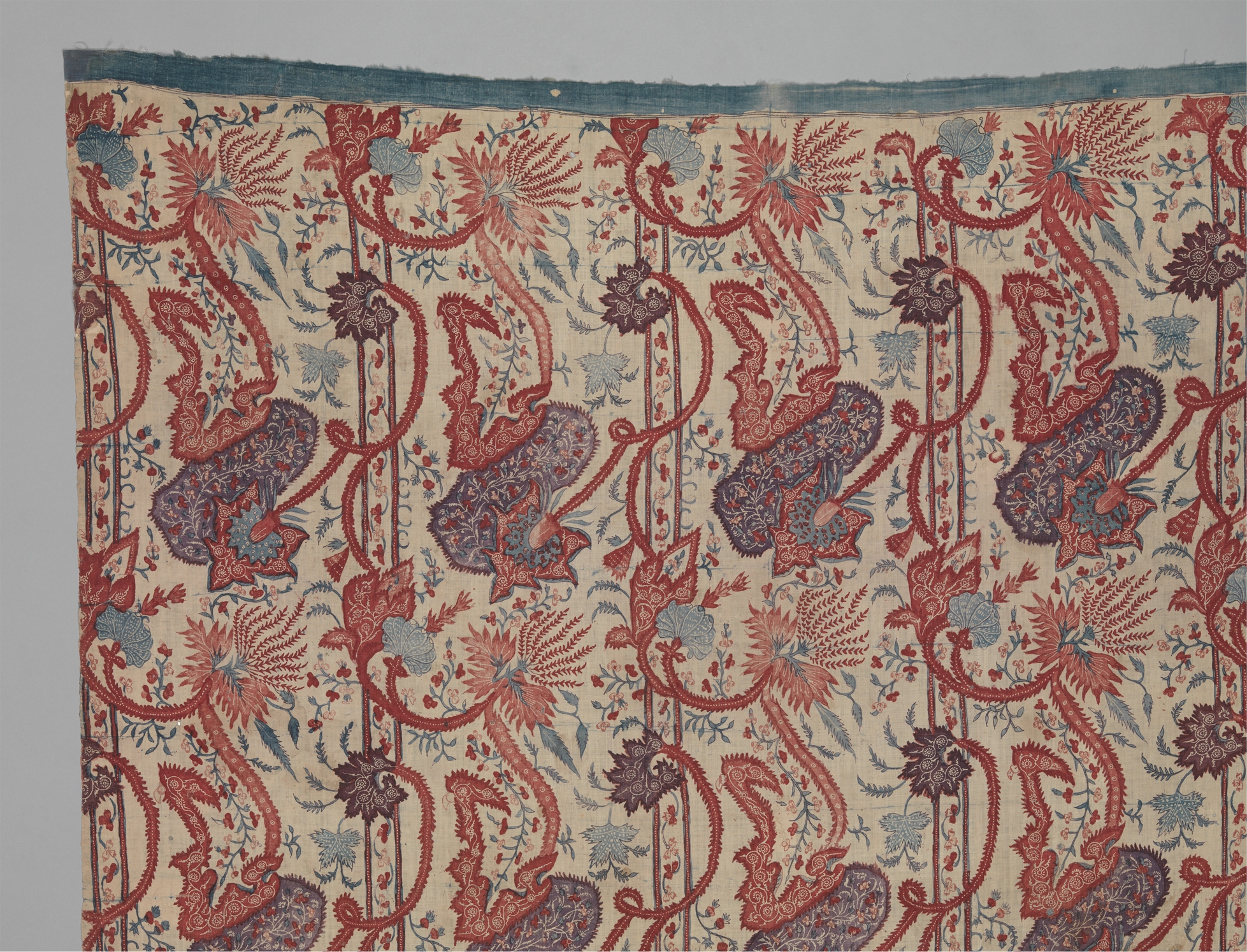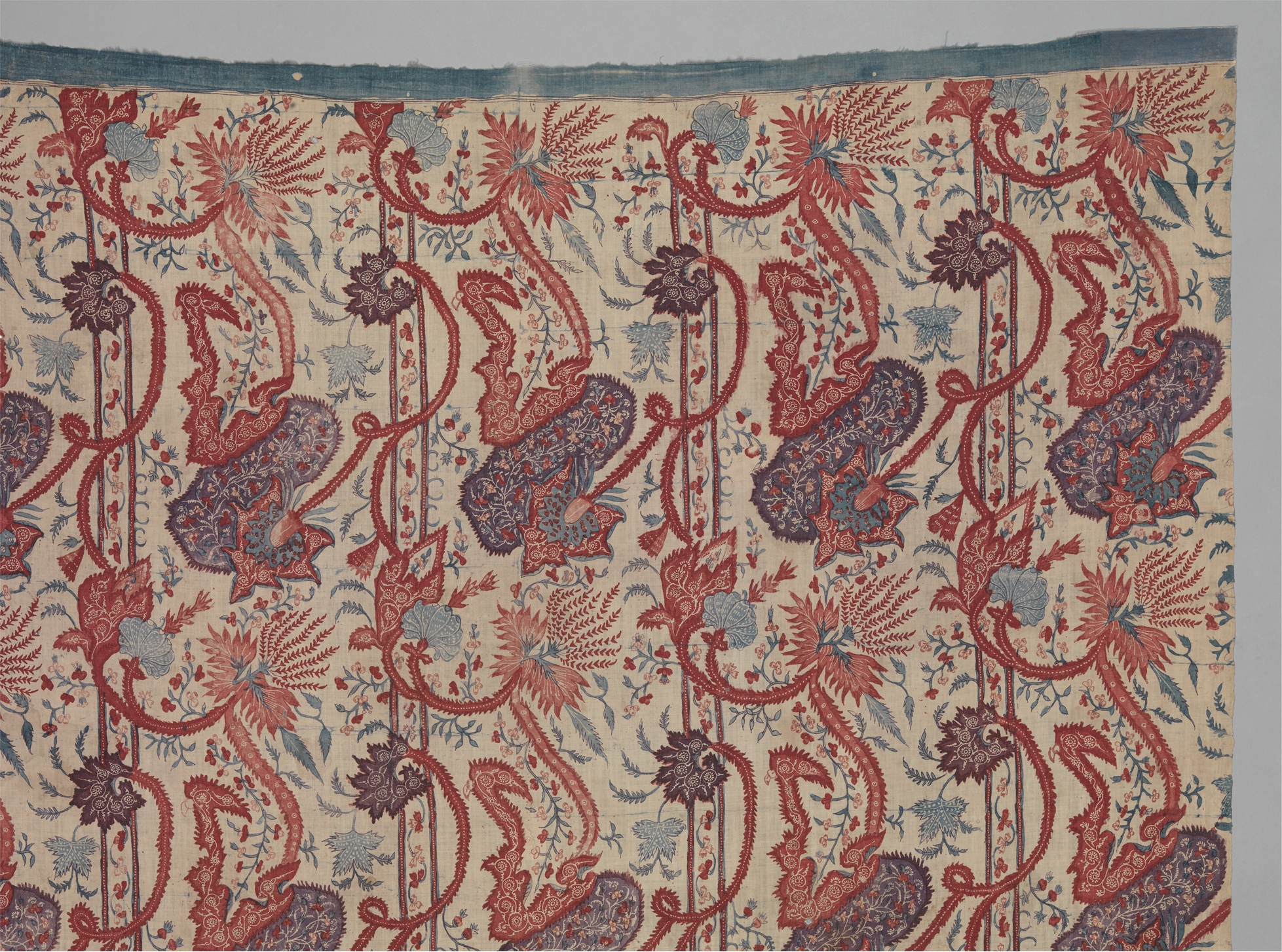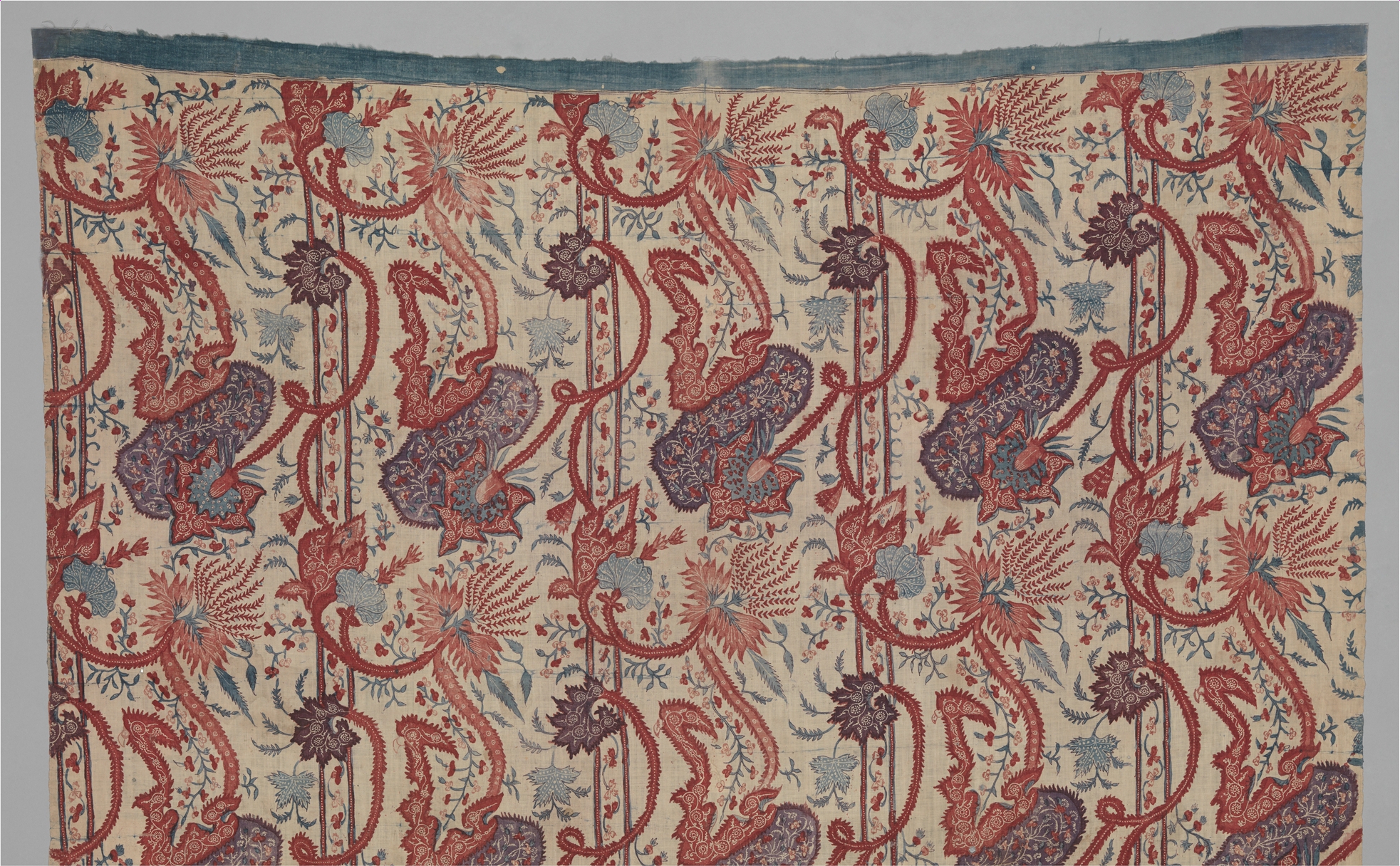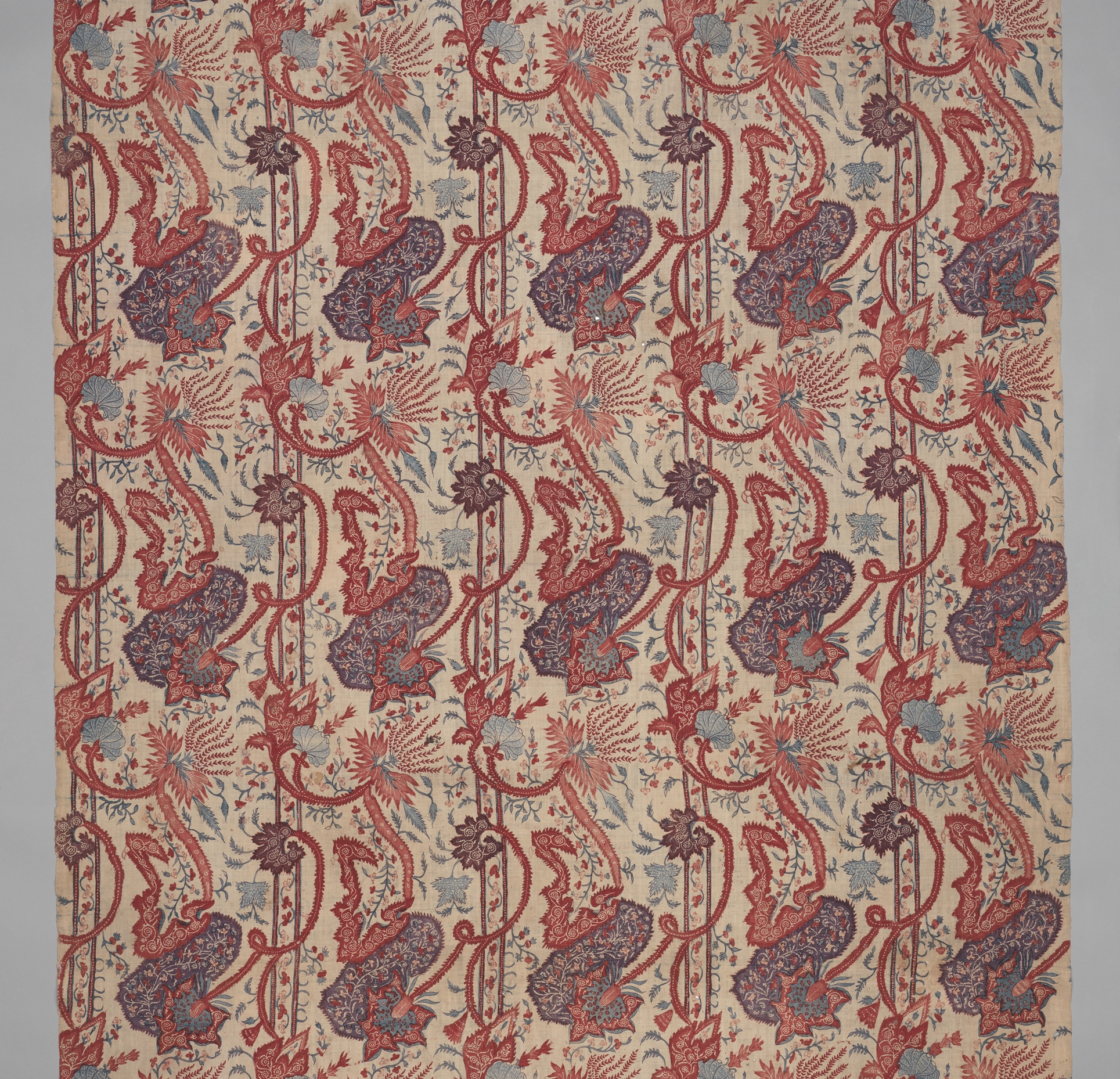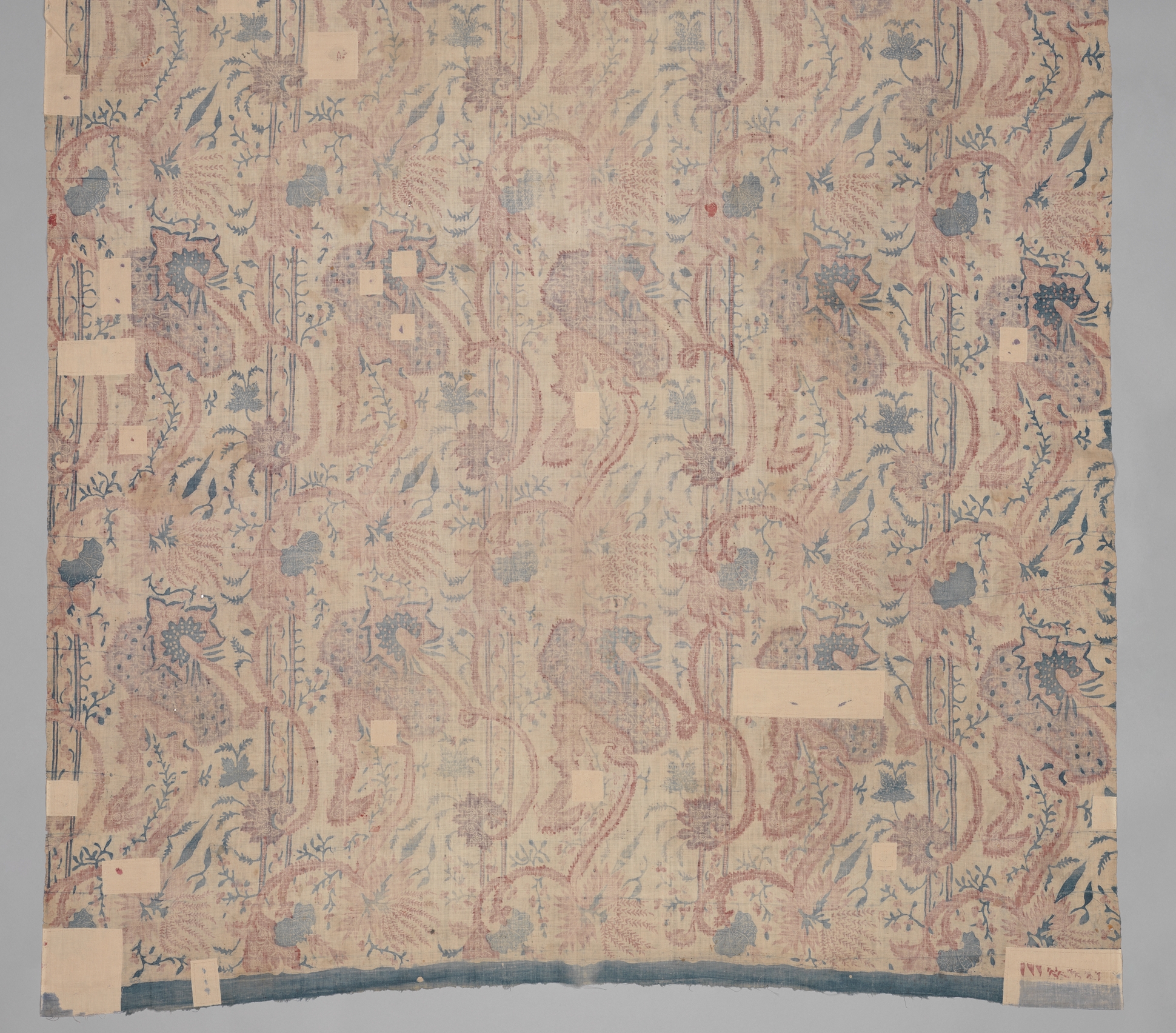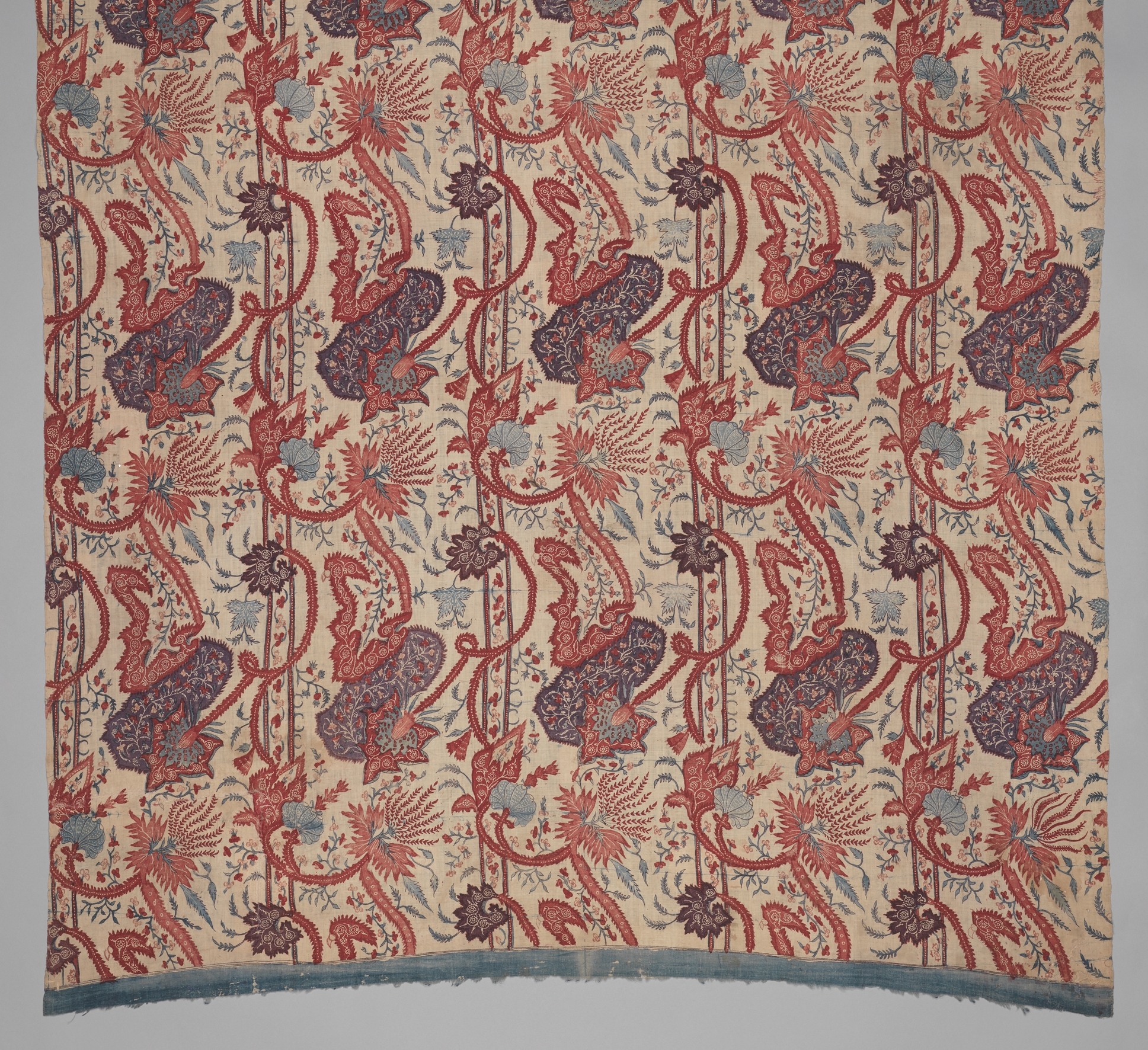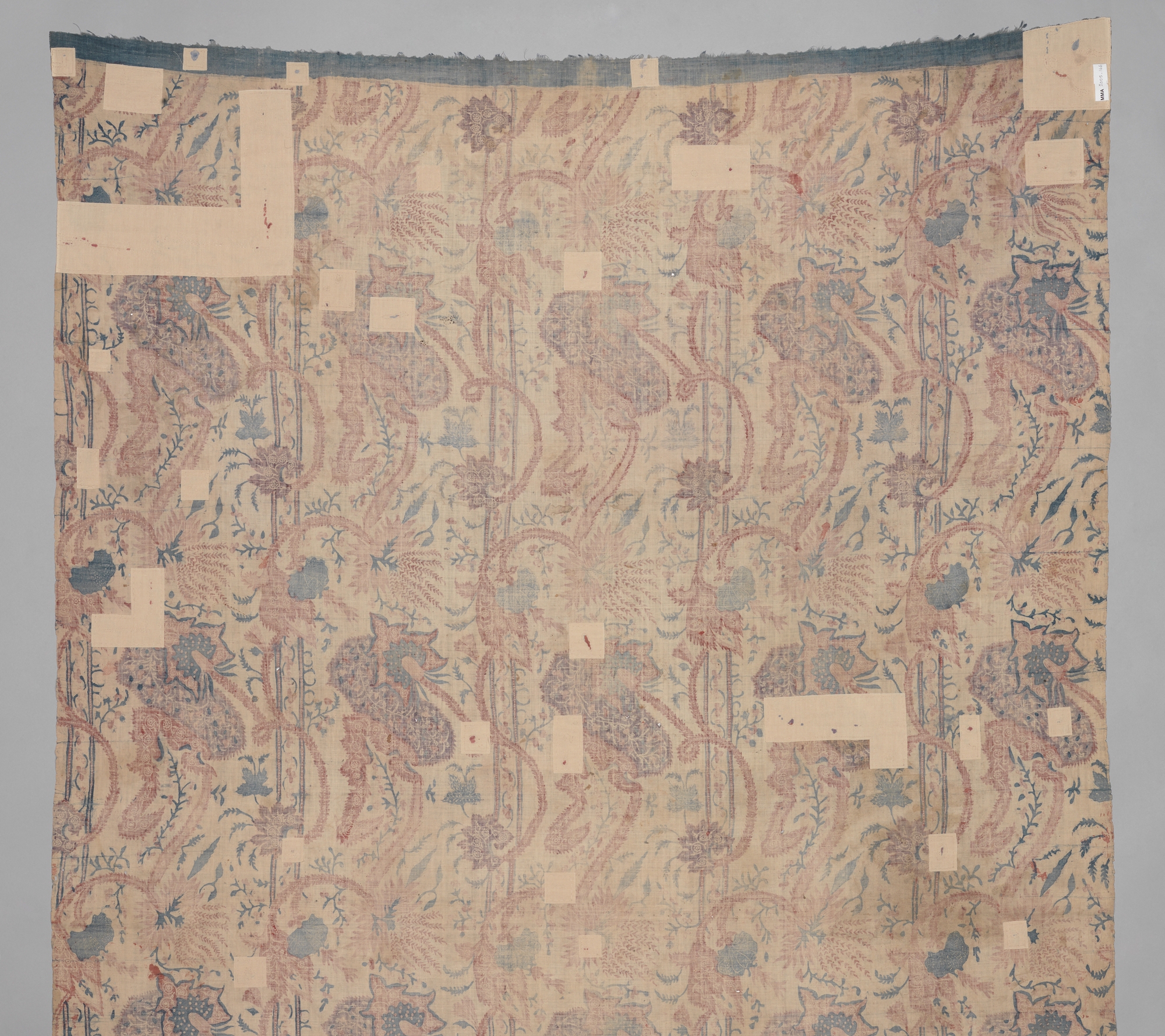Length of cotton
Indian, Coromandel Coast, for export market
Not on view
In the eighteenth century European silk designs spawned imitations and interpretations in India and China. This example, an Indian chintz, and a Chinese woven silk in the collection of the Museum of Fine Arts, Boston (no. 2009.4628), are among a relatively small group of Eastern textiles that were based on European bizarre silks of the early eighteenth century (for another example of European-style silks woven in China, see MMA 19.93.111).. As a group, bizarre silks present a melange of motifs from around the globe. The two textiles shown here allude to designs that depict fantastic flora together with a striped or columnar background -- elements that appeared in European silks periodically from the late seventeenth century to about 1720. Early English silk design drawings in the Victoria and Albert Museum, London, provide dated examples of such motifs, not only the juxtaposition of stripes and highly stylized plant forms, but also the integration of architectural fragments or features into the design, as seen in this Chinese silk.[1]
Indian chintzes and Chinese silks were firmly established in western European dress and furnishing fashion vocabulary by the early eighteenth century. Fine Indian chintzes with precisely drawn patterns based on European silk designs were clearly intended for consumers in the West (see MMA 36.90.121), but variations were also made for markets in the East (See TAPI Collection, Surat, India, no. TAPI 04.66). A chintz in the TAPI Collection, Surat, made for the Dutch Indonesian or Sri Lankan market, is extraordinary for its imitation of a damask background.[2] Generally, the painted cottons made for Eastern markets are characterized by a more limited palette and looser style of drawing than those intended specifically for export to western Europe. However, this textile, like a Dutch wentke (MMA 2012.561) and a chasuble (MMA 1975.212.5) made of chintz, seems to occupy a middle ground between the cottons known to have been intended for Europeans and the cottons firmly associated with the Eastern market. Like the TAPI Collection example, this length of Indian chintz may have been produced for the Dutch traders in Indonesia; equally, it could have found its way to western Europe.
The Chinese silk was probably meant for export to the West and is therefore dated to the period when this style of silk was made in Europe. Not only is it of a European-style design, it is also the same width as most European dress silks of the eighteenth century, unlike many other Chinese export silks, which were of a wider loom width (see MMA 25.84.4 and 67.261). A European monochrome damask of a very similar pattern is in the collection of the Abegg-Stiftung, Riggisberg, Switzerland.[3] It is possible that this type of silk was made in a conscious attempt to fool European customs officials or consumers, or both, in the wake of bans on the importation of Asian silk fabrics that were passed in England and France at the turn of the eighteenth century.
[Melinda Watt, adapted from Interwoven Globe, The Worldwide Textile Trade, 1500-1800/ edited by Amelia Peck; New York: Metropolitan Museum of Art; New Haven: distributed by Yale University Press, 2013]
Footnotes
1. One example in the Victoria and Albert Museum is a design by James Leman, dated 1711 (no. E.1861:32-1991; see Rothstein, Silk Designs of the Eighteenth Century, pl. 31 [VS26] and p. 105), and another is a design by Joseph Dandridge, dated 1719 (no. E.4452-1909).
2. See Barnes, Cohen, and Crill, Trade, Temple and Court, pp. 82 -- 83.
3. See Ackermann et al., Seidengewebe des 18. Jahrhunderts, pp. 235 -- 36, no. 126, called English or Italian.
Due to rights restrictions, this image cannot be enlarged, viewed at full screen, or downloaded.
This artwork is meant to be viewed from right to left. Scroll left to view more.



